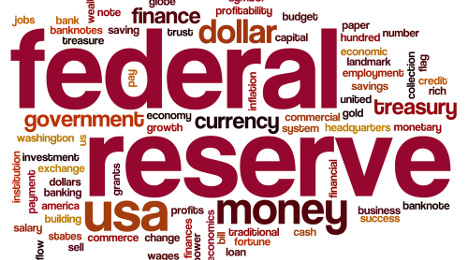Fed reiterates 3 implications of low interest rates

By subscribing, you agree to receive communications from Auto Remarketing and our partners in accordance with our Privacy Policy. We may share your information with select partners and sponsors who may contact you about their products and services. You may unsubscribe at any time.
CARY, N.C. –
With the Federal Reserve’s final gathering of the year set for next week, an interest rate move certainly appears to be in the works since at least one observer said the market has been behaving that an uptick is coming with “100-percent certainty.”
As the Fed considers a wide range of data points before making an interest rate decision, one member of the Federal Open Market Committee (FOMC) explained three important implications of a low-level interest rate. Fed Board of Governors member Jerome Powell discussed them during an appearance at The Economic Club of Indiana in Indianapolis just after Thanksgiving.
“First, today’s low rates are not as stimulative as they seem,” Powell said. “Consider that, despite historically low rates, inflation has run consistently below target and housing construction remains far below pre-crisis levels.
“Second, with rates so low, central banks are not well positioned to counteract a renewed bout of weakness,” he continued. “Third, persistently low interest rates can raise financial stability concerns. A long period of very low interest rates could lead to excessive risk-taking and, over time, to unsustainably high asset prices and credit growth. These are risks that we monitor carefully. Higher growth would increase the neutral rate and help address these issues.”
Perhaps what the Fed might be monitoring is auto financing being extended to the riskiest credit segment, which Experian Automotive noted as being at a nine-year low during the third quarter.
Powell then reiterated what the Fed considers before making any moves regarding interest rates.
Subscribe to Auto Remarketing to stay informed and stay ahead.
By subscribing, you agree to receive communications from Auto Remarketing and our partners in accordance with our Privacy Policy. We may share your information with select partners and sponsors who may contact you about their products and services. You may unsubscribe at any time.
“Incoming data show an economy that is growing at a healthy pace, with solid payroll job gains and inflation gradually moving up to 2 percent,” Powell said. “In my view, the case for an increase in the federal funds rate has clearly strengthened since our previous meeting earlier this month.
“Of course, the path of rates will depend on the path of the economy,” he went on to say. “With inflation below target, relatively slow growth, and some slack remaining in the economy, the committee has been patient about raising rates. That patience has paid dividends. But moving too slowly could eventually mean that the committee would have to tighten policy abruptly to avoid overshooting our goals.”
Immediately after the FOMC released minutes from its gathering in early November, Stifel Nicolaus chief economist Lindsey Piegza called them “essentially moot at this point,” because of what chairman Janet Yellen and others mentioned for much of the year.
“Against the backdrop of a flurry of committee members’ comments — including the chairman herself — suggesting a rate rise was imminent, the market is now pricing in a December hike with 100 percent certainty,” Piegza said.
“There remains much debate among the committee members over the need for preemptive Fed action,” she continued. “Some argued that risks to economic and financial stability could ‘increase over time’ if the labor market overheated, and furthermore that maintaining low interest rates for an extended period could lead to a further mispricing of risk.
“Of course, other suggested that given the sill-lackluster pace of activity in the overall economy, allowing the unemployment rate to fall below its longer-run normal level for a time could result in ‘favorable supply-side effects,’ as well as potentially ‘hasten’ the return of inflation back to the committee’s longer-term 2-percent objective,” Piegza went on to say.
Speaking of employment data, Cox Automotive chief economist Tom Webb noted in his commentary associated with the latest Manheim Used Vehicle Value Index that a 178,000 increase in payrolls in November means that full-year 2016 job gains will likely total 2.2 million — the sixth consecutive year above the 2-million mark. Webb calculated that figure would push the six-year total to 14.5 million.
“Real GDP growth in 2017 is expected to be significantly faster than in 2016, but job growth will likely be slower,” Webb said.
“Think of it as a capacity issue,” he continued. “The overall unemployment rate is already below 5 percent, and for college graduates it is only 2.3 percent. But faster economic growth coupled with slower absolute job gains will, by definition, ensure that the benefits will be more widely and evenly spread. Look for faster wage gains and increased labor productivity.”
Piegza circled back to the employment data to elaborate about what the Fed appears poised to do.
“Employment gains remain modest but solid as we enter into the final month of the year, with the latest November report in line with the trend pace over the past several months,” she said. “For the Fed, the November employment report simply reinforces the notion of moderate labor market conditions: not too hot, not too cold, but good enough to follow through with the expected December rate hike priced in with 100 percent certainty.
“The market, meanwhile, is already looking out to 2017, with a new world of pro-growth policies expectedly ushered in by a Trump administration,” Piegza went on to say. “The November report does little to undermine the optimism already priced into the market — furthermore, it does little to justify such an extreme reaction since the presidential election.”


